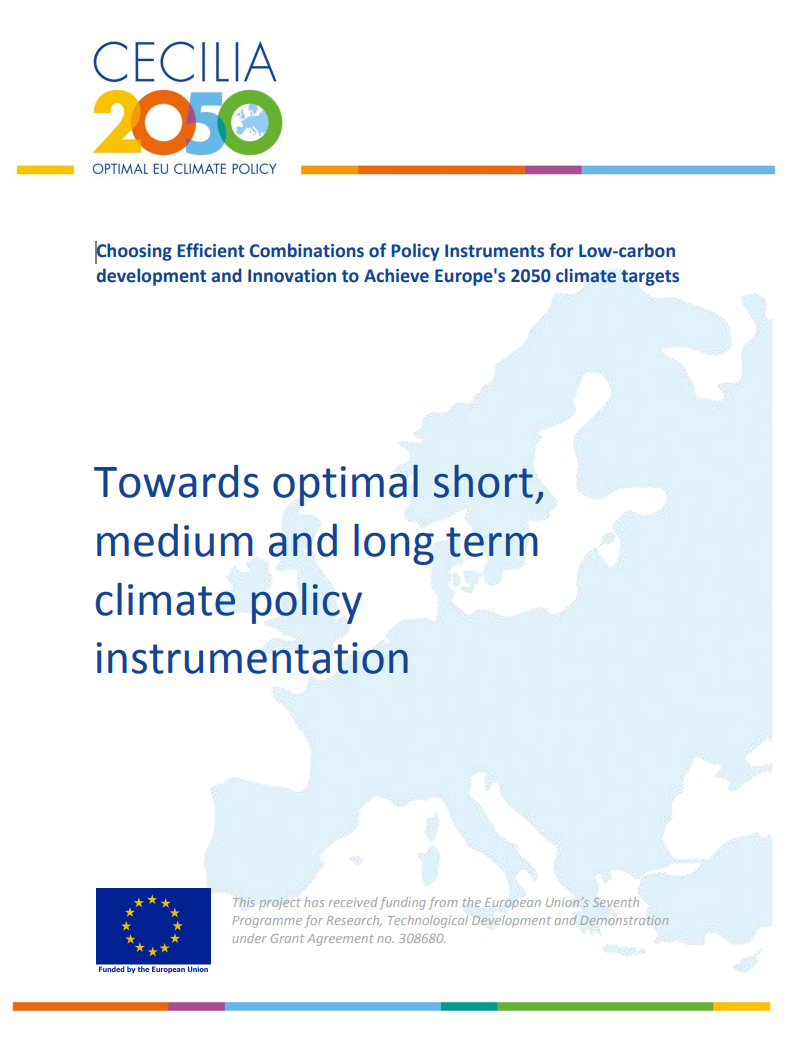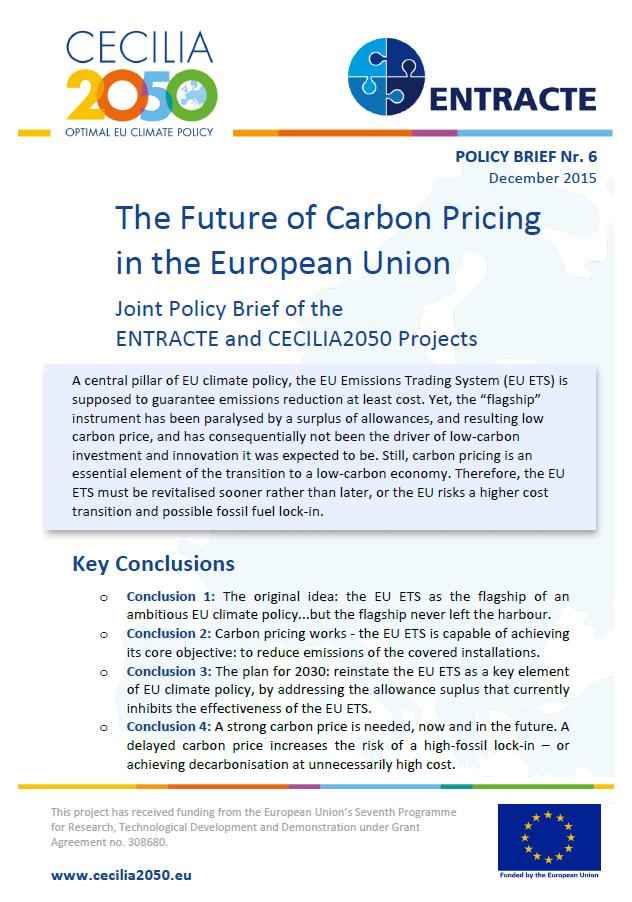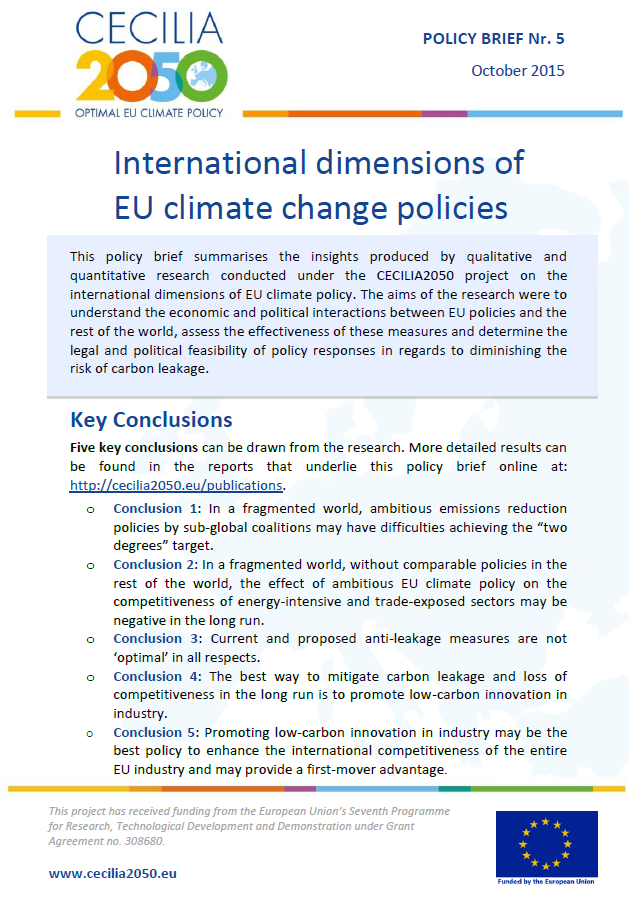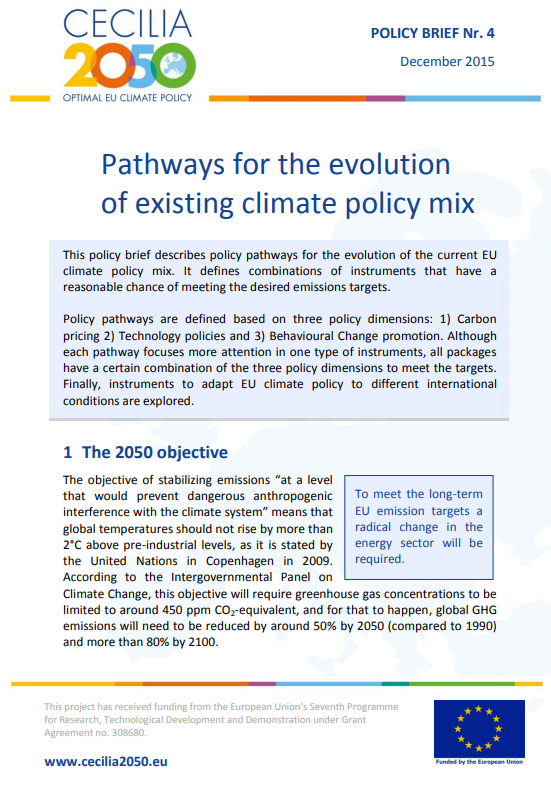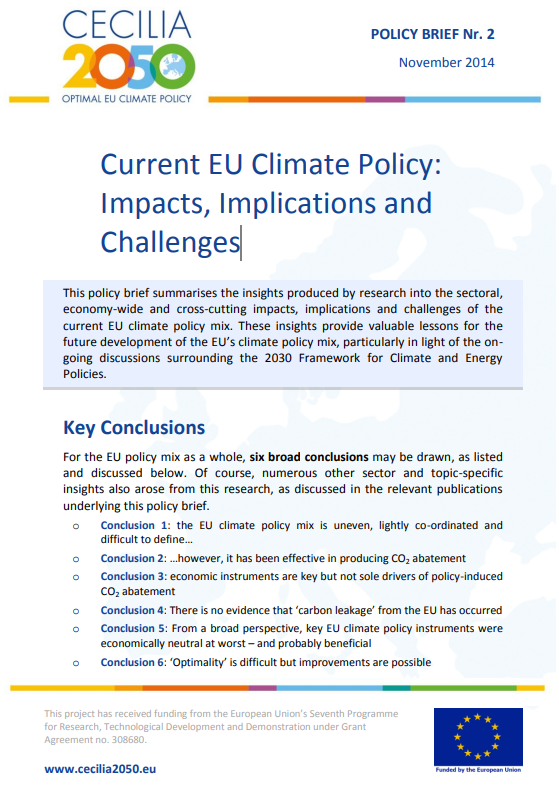Development of Scenarios to 2030 and 2050
CECILIA2050 Policy Brief No 3
- Publication
- Citation
Consortium, CECILIA2050 Project 2015: Development of Scenarios to 2030 and 2050. Policy Brief.
After taking stock of the current EU climate policy mix and investigating its sectoral impacts and limitations, the CECILIA2050 project completed a third series of studies, which developed policy scenarios up to 2030 and 2050.
Three models were used for the simulation of different policy scenarios: Meyer et al. (2014) applied the global economic environmental model (GINFORS) in their study to analyse the economy wide effects of future policy instrument mixes, Solano and Drummond (2014) used the European TIMES Model (ETM-UCL) to examine the implications of imposing an 80% reduction of EU CO2 emissions on the Union’s energy system by 2050 compared to 1990 levels, and De Koning et al. (2014) utilised EXIOBASE, a highly detailed global IO database with environmental extensions to assess the impact of technological solutions and behavioural changes for climate change emission mitigation up to the year 2050.
This policy brief summarises the simulation results of the three models used to track the development of climate policy scenarios in the CECILIA2050 project. In addition, the policy brief also draws insights from a study by Huppes and Huele (2014), which developed a set of building blocks for coherent instrument mixes in respect to European climate governance. Moreover, the policy brief is also based on a comparative analysis of the simulation results of the three models that was conducted by Drummond (2014).
Five key conclusions can be drawn from the underlying research:
- Conclusion 1: A carbon price alone will meet the climate targets only under restrictive assumptions
- Conclusion 2: A sectoral strategy calls for further instrument implementation to decarbonise electricity production, electrify road transport and improve the energy efficiency of buildings
- Conclusion 3: A core strategy – the sectoral strategy combined with a carbon price – is (nearly) able to meet the global "two degrees" target and the EU 80% emissions reduction target
- Conclusion 4: Resulting from the promotion of renewables and improvements in energy efficiency, an investment boom will be induced in the EU
- Conclusion 5: Climate policy will have positive effects on GDP in the EU
